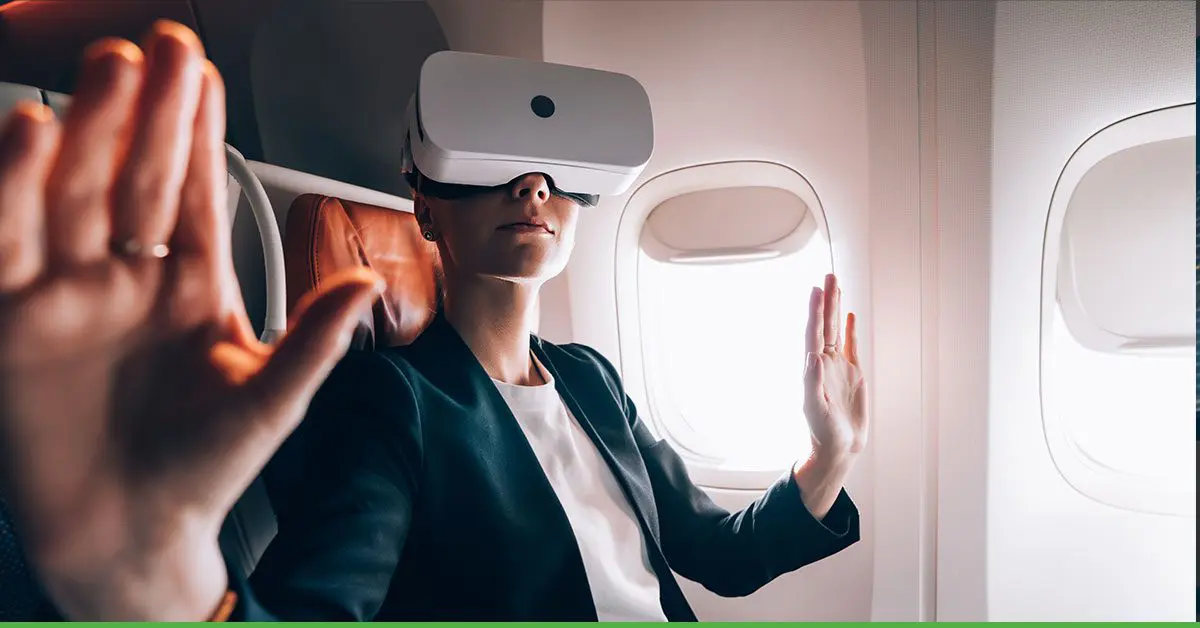In the ever-evolving world of technology, one term that has been making waves, quite literally, is “haptic feedback.” This sophisticated technology has seen significant statistical growth and has become an integral part of our daily lives.
The haptic technology market was estimated to be worth USD 3.9 billion in 2022 and is expected to reach USD 5.0 billion by 2028, with a CAGR of 3.7%.
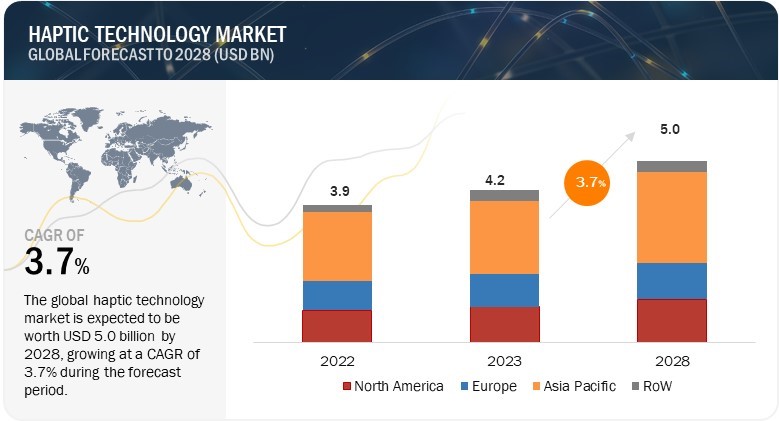
The increasing popularity of haptic feedback technology is evidence of its immersive qualities and potential to revolutionize user experiences. As we strip back the layers, it will be apparent that haptic feedback is a key component influencing the direction of digital interaction rather than just an add-on feature.
Haptic feedback is central to our day-to-day activities. It integrates smoothly into the gadgets we frequently use, going beyond the intricacies of virtual reality. Consider the slight vibration on your smartphone to notify you of a message or the tactile response of a game controller to take you into a virtual world. These are examples of haptic feedback.
Take digital watches as a traditional example to help make this more relevant. Beyond only telling time, haptic feedback improves the user experience by making interactions more natural and engaging. These small details make ordinary devices become intelligent, receptive companions.
This article discusses the intricacies of haptic feedback, whether you are a tech enthusiast eager to understand more or a developer wanting to stay ahead of the curve. We will help you understand the technology, from its roots in Morse code to its role in virtual environments.
Understanding Haptic Feedback Technology
Haptic feedback is a touch-centric method of communication. Instead of relying primarily on visual or auditory signals, this technology enhances the user experience by conveying information via subtle tactile cues. The goal is clear: creating a more immersive and engaging encounter transcending traditional technological boundaries.
Haptic feedback differs from traditional vibration alerts. While both haptic feedback and vibration alerts use vibrations to communicate with the user, the main difference is their complexity. Haptic feedback devices use enhanced waveforms to convey subtle information and provide a more sophisticated interaction. On the other hand, vibration alerting products are comparatively more straightforward, solely meant to give a strong vibration as a notification of an incident.
Consider a smartwatch that provides notifications during a workout. In the case of a vibration alert, the watch may use a basic and forceful vibration to indicate that a set has been completed. This simple solution adequately notifies the consumer of the event, but it lacks granularity.
The smartwatch can provide a more proficient experience with haptic feedback. Instead of a consistent vibration, it might use variable intensities or patterns to transmit specialized information. A mild vibration, for example, may signify the finish of one set, whereas a greater and longer vibration may suggest the need for a rest interval. As a result, haptic feedback extends beyond a simple message, giving consumers detailed and actionable data during their workout regimen.
The Evolution of Haptic Feedback
Morse code set the groundwork for early haptic communication. It was a revolutionary way of communicating through coded sequences of dots and dashes. Individuals could interact across enormous distances by translating messages into tactile sensations, eliminating the need for spoken or written words.
Early inventors and visionaries began exploring tactile communication in more diverse ways based on the ideas of Morse code. Devices that could communicate information through touch arose, ranging from simple vibration patterns to more refined tactile signals.
For example, the Aura Interactor vest was created in 1994. The vest is a wearable force-feedback device that detects an audio signal and employs electromagnetic actuator technology to translate bass sound waves into vibrations that can reflect movements such as punching or kicking. The vest connects to the audio output of a stereo, TV, or VCR and reproduces the audio signal through a speaker built into the vest.
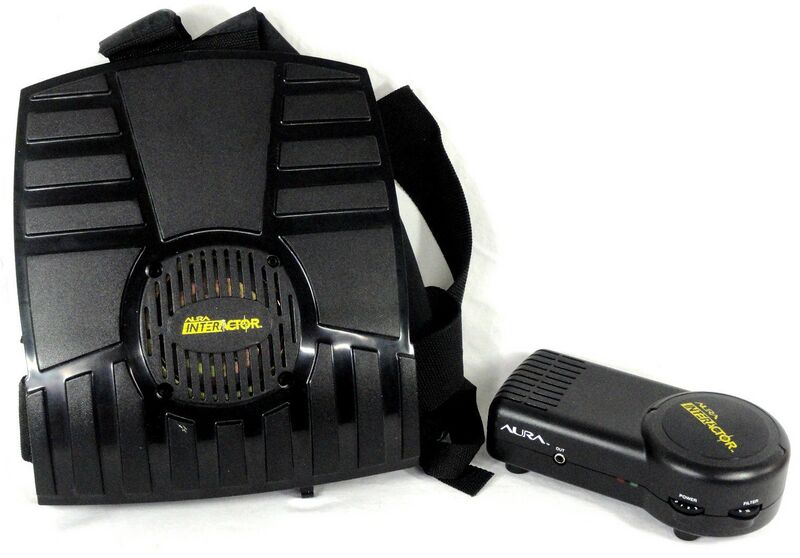
These efforts were the first steps toward adding touch as a feasible technique of conveying information—a forerunner to today’s sophisticated haptic feedback systems.
We are now in the digital age, dealing with virtual reality and simulation. Haptic feedback continuously evolves as it becomes an essential component of immersive experiences. Users in virtual environments see and hear the digital setting and may also feel it through haptic feedback. This significant integration improves simulation realism by delivering an intense sensory experience beyond visual and audio aspects.

The Purpose of Haptic Technology
Why is haptic feedback important? The answer is its ability to improve user experience and performance across various applications. Technology goes beyond mere functionality by including haptic components; it improves how consumers perceive and interact with digital interfaces. The goal of haptic feedback is to bridge the gap between the digital and physical worlds, whether to increase a gaming experience’s realism or provide critical tactile feedback in professional simulations. It is about integrating technology into a user’s sensory experience, improving performance, and enriching the user journey.
How Does Haptic Feedback Work?
Let’s take a look at the components that power haptic feedback technology.
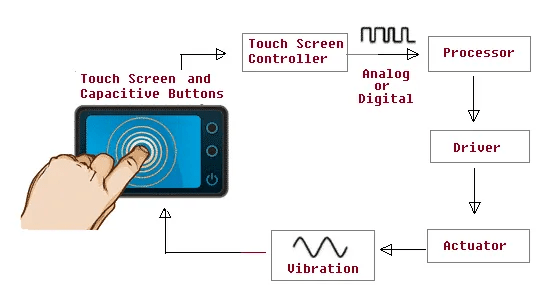
Motor – signal to vibration conversion
The motor is at the heart of the system, turning electrical inputs into mechanical vibrations—the fundamental yet important mechanism defining haptic sensations.
Sensor – interaction precision
Sensors act as observers, capturing user interactions precisely. Their job is critical in maintaining responsiveness and ensuring that haptic responses appropriately correspond to user activities.
Actuators – tactile response adjustment
Actuators add complexity by modifying factors like intensity and pattern. This fine-tuning adds to the complex nature of haptic experiences.
Algorithms – intelligent interactions
Algorithms continuously adapt haptic feedback depending on contextual inputs, resulting in a practical and immersive user experience with over-complicated it.
Multimedia integration
Integrating multimedia components orchestrates each component’s contribution, resulting in a coherent and holistic haptic experience.
The Technical Journey of Smartphone Haptic Feedback
To bring the haptic feedback journey to life, below is how the process might flow using a smartphone.
- Signal Generation
When you tap on your screen or interact with a device, a signal generating process is initiated, laying the groundwork for the whole haptic feedback system.
- Motor Transmission
These signals are then routed to the device’s motor. Assume you’re typing a message on your smartphone, and the electrical signals generated by your touch travel to the motor with each keystroke. As the silent workhorse, the motor converts these electrical signals into mechanical vibrations, creating the framework for the tactile part of haptic feedback.
- Vibration Creation
When you receive a notice on your smartphone, the motor converts signals into vibrations. These vibrations produce a range of tactile sensations depending on their strength, duration, and frequency. The motor methodically crafts each bespoke reaction to enhance your contact with the device, whether a slight buzz for a message or a more prominent vibration for a call.
- User Interaction
Sensors monitor user inputs as you engage with your smartphone, whether through a tap, swipe, or gesture. These sensors function as sharp observers for the device, establishing a responsive loop. This loop ensures that the haptic reactions match your actions, adding a tactile component to your digital experience.
- Actuators
Actuators vary in intensity and pattern, extending the tactile palette of your smartphone interactions, whether a mild pulsation during a navigation prompt or a discrete vibration pattern for an incoming call.
- Algorithms
Invisible conductors of this technological symphony are sophisticated algorithms working behind the scenes. Consider using your smartphone’s virtual keyboard. The algorithms examine your keystrokes, adjust to contextual inputs, and fine-tune the haptic feedback. This level of computational realism ensures that the user experience is lifelike and engaging.
- Data Transmission
The journey ends when information from your exchanges is returned to the smartphone’s computing system. This data transmission completes the loop, allowing real-time changes based on your dynamic interactions. Whether playing a mobile game, composing a message, or navigating an app, the device changes on the fly to provide a dynamic and responsive haptic user experience.
Types of Haptic Feedback
There are several types of haptic feedback, each with its nuances and unique real-world applications.
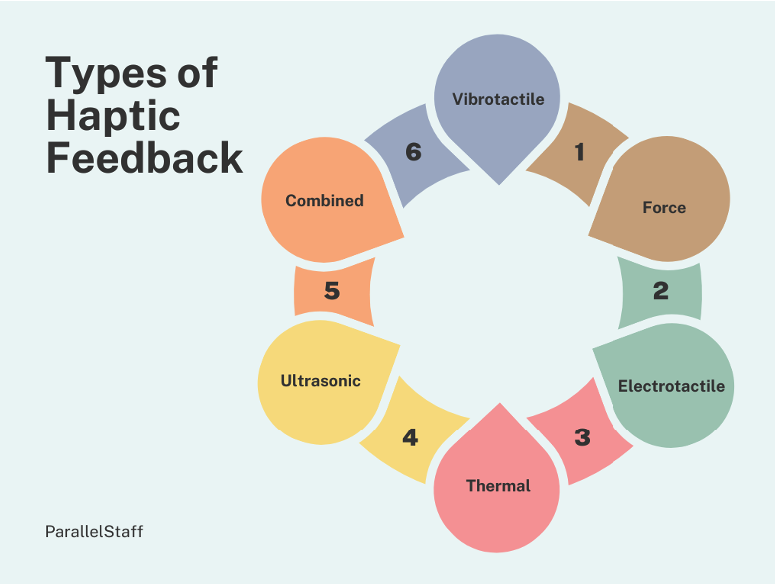
Vibrotactile Feedback
The most popular feedback, vibrotactile feedback, is found in smartphones. The slight vibration alerts you when you receive a text message or notification, eliminating the need for auditory signals. This type of haptic feedback raises user awareness without interfering with the environment.
Force Feedback
Force feedback, most notably in gaming controllers, offers a tactile component to virtual experiences. Consider a racing game in which the controller simulates the feel of various terrains. This sort of haptic feedback immerses gamers in the gaming environment by simulating real-world forces.
Electrotactile Feedback
Touchscreen devices exhibit electrotactile feedback. You may experience a tiny electric sensation with each key press when typing on a virtual keyboard. This haptic feedback simulates the tactile experience of physical keys, making the interface more engaging and responsive for users.
Ultrasonic Feedback
Ultrasonic tactile feedback can be used to create virtual buttons or controllers in vehicles. Ultrasonic feedback duplicates the sensation of pushing real buttons when a motorist hovers their hand over a touch-sensitive surface. This advancement improves vehicle safety by reducing distractions.
Thermal Feedback
Thermal feedback is used in medical training simulators to reproduce the sensation of surgical procedures. Surgeons in training can experience the varied temperatures associated with different tissues, giving their virtual practice a more realistic perspective.
Combined Feedback
To generate immersive experiences, combined feedback systems combine numerous haptic aspects. Virtual reality (VR) users may experience a mix of vibrotactile sensations, force feedback, and electrotactile feedback. This all-encompassing technique improves the sense of presence and realism in VR simulations.
Real-World Applications of Haptic Feedback
There are many use cases for haptic feedback technology. Below are some of those that we see in the modern world.
Gaming
Haptic feedback in gaming dates back to the 1970s, when Sega’s Moto-Cross introduced the sensation of rumble upon in-game crashes. It has evolved into a non-negotiable feature for new gaming consoles since the early 2000s.

Today’s devices, such as the Steam Controller and the PlayStation DualSensev, reinvent gaming by providing ultra-realistic haptic feedback, allowing players to experience nuanced aspects ranging from spellcasting to varying topographical sensations. This quest for realism extends to accessories such as haptic gaming headsets, indicating a dedication to transforming and immersive gaming experiences. Haptic technology is more than a passing fad; it is a driving force defining the future of interactive entertainment.
Medicine
In the medical and dentistry fields, haptic feedback has revolutionized surgery through telepresence, allowing top doctors around the world to perform procedures remotely. Haptic robotic technology mimics tactile and resistive feedback, simulating the feelings of in-person surgery and allowing for lifesaving operations to be performed from a distance.
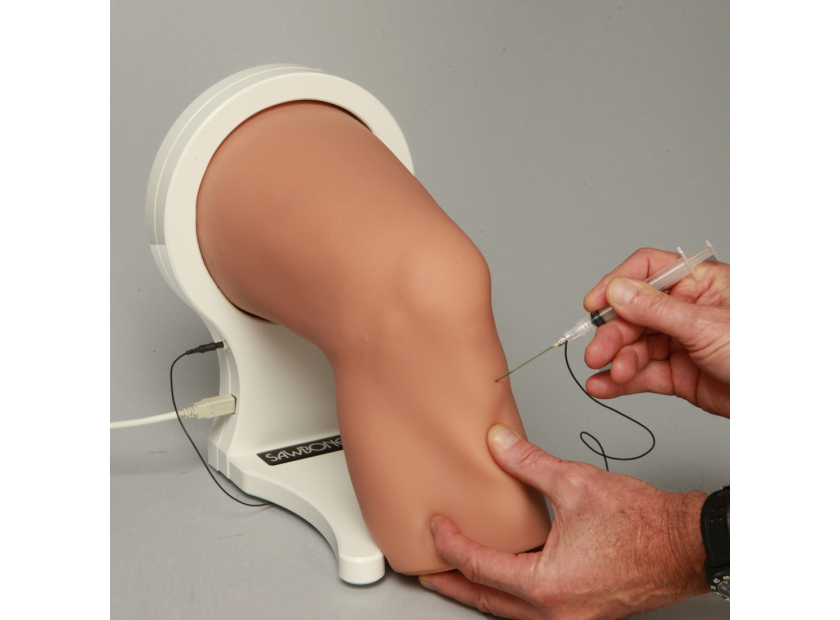
Furthermore, haptic feedback is essential in medical and dental training. It helps trainee doctors prepare for minimally invasive procedures such as laparoscopies and endoscopies by providing a realistic tactile experience that improves their abilities and proficiency. Haptic technology integration in healthcare training is transforming the future of medical education and procedural readiness.
Entertainment and Virtual Reality (VR)
Demand for haptic feedback has increased in industries such as virtual reality (VR) and theme parks as people look for new ways to improve their daily entertainment experiences.
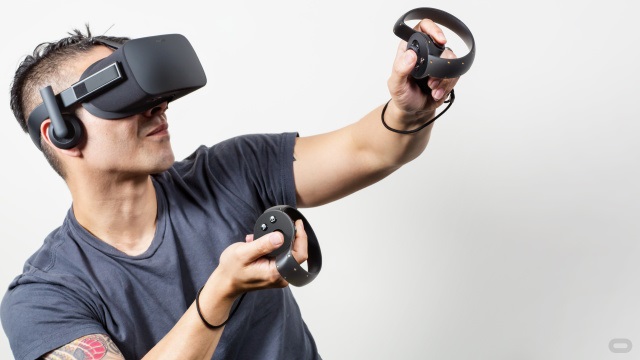
The primary purpose of haptic feedback in entertainment is to increase the user’s sensation of presence while fostering unrivaled realism. This is accomplished by allowing users to see and hear the experiences and feel them, changing their audiovisual engagement into an immersive, out-of-body experience.
Haptic technology has moved beyond theme parks and into consumer sectors. Products accessible online, such as the Woojer Vest, offer low-frequency sensations throughout the body, boosting various at-home entertainment experiences. This consumer-friendly adaption of haptic technology is redefining the landscape of personal entertainment by allowing people to customize their immersive experiences within their homes.
Space Exploration
The advancement of haptic technology is not limited to Earth; it is spreading beyond space, altering how humans interact with and comprehend the forces exerted beyond our globe. This technology, whether assisting astronauts in orbit or helping haptic robots and exoskeletons in space exploration, provides essential insights into the particular constraints of outer space.
NASA and the European Space Agency, as collaborators on the METERON project (multi-purpose end-to-end robotic operation network), are at the forefront of using haptic feedback to construct extraterrestrial infrastructure. This ambitious project envisions humans on Earth remotely guiding robots that build infrastructure on faraway planets using the sophisticated capabilities of haptic technology.
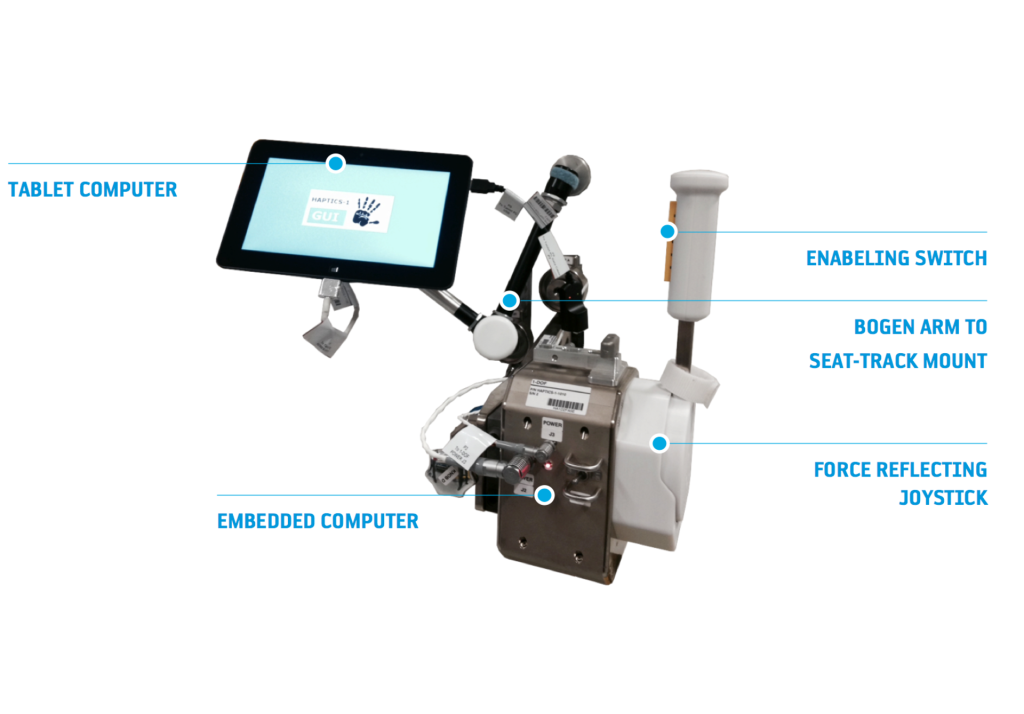
The Haptics-1 Joystick pictured above has a high-resolution force control for enhanced physiology research in microgravity.
Benefits of Haptic Feedback
Incorporating haptic feedback into various applications yields a spectrum of practical advantages, transforming user experiences profoundly.
Immersion
Haptic feedback connects the digital and physical worlds, engaging users in a multimodal experience. Immersion is increased when users can feel the pulse of a heartbeat in a health app or the recoil of a virtual weapon in a game, enhancing the link between users and digital worlds.
User Accessibility
Haptic feedback improves accessibility by adding a tactile layer to interactions. This is especially useful for users who have visual or auditory disabilities because it provides a non-visual and non-auditory channel for information and participation.
Navigation Accuracy
Haptic feedback improves navigation accuracy in touchscreen applications. Users can experience unique responses to touches, which reduces the possibility of errors and creates a more intuitive and accurate engagement with devices.
Alerts and Notifications
Notifications are transformed from just visual or auditory signals to tactile, attention-grabbing warnings with haptic feedback. Tactile sensations allow users to detect urgency or importance, ensuring prompt responses without interfering with the overall user experience.
Reducing Cognitive Load
The cognitive load on consumers is decreased by utilizing haptic feedback. Tactile signals give another layer of information, allowing users to perceive and respond to stimuli more instinctively, speeding up the whole cognitive process.
Safety and Feedback
Haptic feedback adds to a more realistic and safer user experience in safety-critical applications such as driving simulators or medical training. Users can experience the consequences of their actions, which fosters a greater feeling of responsibility and awareness.
Personalization
Haptic feedback enables personalized interactions, allowing experiences to be tailored to individual tastes. Users are engaged on a more personal level, boosting applications’ overall enjoyment and effectiveness, from tailored vibrations for individual contacts to discrete tactile responses in games.
Make It Happen With ParallelStaff
Unlocking the full potential of haptic technology demands the expertise of skilled developers who understand the intricate nuances of this evolving landscape.
ParallelStaff is a leading nearshore software development solution provider. As innovation architects, we comprehend the importance of translating ideas into tangible, haptic experiences. ParallelStaff emerges as the ideal partner for those embarking on groundbreaking haptic projects, with over 3.5 thousand engineers in our community across over 15 countries.
Our team boasts proficiency in cutting-edge technologies, ensuring that your vision aligns seamlessly with the latest advancements in haptic feedback. With a commitment to seamless collaboration and a track record of delivering cost-effective solutions, ParallelStaff stands ready to transform your haptic aspirations into reality. Take the first step towards revolutionizing your projects.
Book a call with us today.
Summary
Haptic feedback, a disruptive technology, has evolved from simple vibrations to a complex communication tool affecting technology’s future. Haptic feedback, as opposed to standard alerts, transmits information through touch, improving user experiences across various applications. Haptic feedback has pervaded everyday technology, becoming an intrinsic component of our digital experiences, from the faint vibrations of a smartphone to the immersive feelings of virtual reality.
As we negotiate the current haptic technology landscape, watch for future breakthroughs that will change user interactions and enrich technological experiences. The journey into haptic feedback is exciting, and the future promises even more breakthrough applications that will push the boundaries of what is possible in the ever-changing world of technology.
Frequently Asked Questions
1. What is haptic feedback, and how does it differ from traditional vibration alerting?
Answer: Haptic feedback is a communication method that conveys information to users through touch sensations. Unlike traditional vibration alerting, haptic feedback employs advanced waveforms, providing a more nuanced and immersive tactile experience.
2. How does haptic feedback work in virtual reality applications?
Answer: In virtual reality, haptic feedback enhances immersion by simulating tactile sensations. Devices use actuators and sensors to create vibrations, allowing users to feel the virtual environment. This technology is crucial in providing realistic and engaging experiences in VR applications.
3. Can haptic feedback be integrated into mobile devices like smartphones?
Answer: Yes, haptic feedback is commonly integrated into smartphones and tablets. It enhances user interactions by providing tactile responses, such as vibrations, for actions like typing, tapping, or receiving notifications, creating a more engaging and responsive user experience.
4. What are the challenges associated with implementing haptic feedback in devices?
Answer: Challenges in implementing haptic feedback include balancing power consumption, designing compact and efficient actuators, and ensuring compatibility with various devices. Developers must also consider user preferences to provide customizable and comfortable haptic experiences.
5. Is haptic feedback only used for entertainment, or does it have practical applications?
Answer: While haptic feedback is widely used in entertainment, its applications extend to practical domains. In industries like healthcare and education, haptic feedback is utilized for medical simulations, training scenarios, and even remote surgery, showcasing its diverse and impactful applications beyond entertainment.
- What Are the Benefits of Using Python GUI Development? - May 29, 2024
- Mastering the Art of Making an AI: A Practical Guide - May 23, 2024
- Mastering Efficiency: Navigating the World of Microservices Architecture - April 21, 2024
